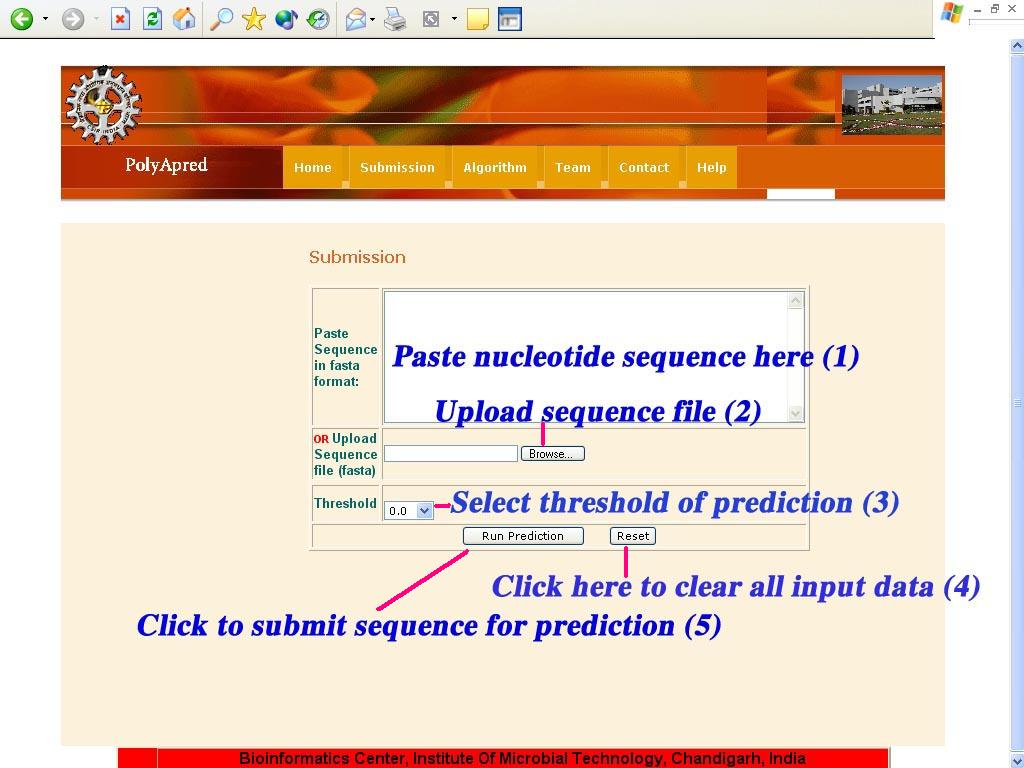

| Home | Submission | Algorithm | Team | Contact | Help |

Help
Paste or Submit your sequencesThe input sequence for prediction is a one-letter code nucleotide (A, C, G, T) sequence in FASTA format. The sequence can be pasted in the text area provided or can be uploaded through a file in the format specified in the form. PolyApred take 206 nt long window from long query sequence and calculate the score for hexamer lie in the middle, in this way it slide to the whole sequence. Our server use only one query sequence and may takes more time for job. Input sequence should not less than 206 nt.(Figure 1).
Threshold
The threshold is used to discriminate the Polyadenylation signal(PAS) from non-PAS. The user can vary the threshold score between -1.0 to 1.0. The nucleotides achieving score more then the cutoff score are predicted as PAS otherwise they are predicted as non-PAS.if the user did not select any cutoff score then the default threshold of prediction methods will be used.
Prediction results
Output: The results of the prediction displayed in three user-friendly tabular formats. First tabular form predict the PAS based on AATAAA and ATTAAA signature sequence whereas second one predict the PAS based on 11 other signature sequence and the third one predict the novel PAS in the sequence. Each of result display format firstly provides a total number of positive PASes found followed by comprehensive account of sequence name, length of input sequence, position of Polyadenylation signal, sequence of polyadenylation signal, score and the prediction result. A region A(A/T)TAAA is assigned a PolyA signal if the prediction score is greater than the threshold. On the other hand, pattern is assigned as non-PAS if the prediction score is less than the threshold.(Figure 2).

Figure 1: Different fields of polyApred submission form.

Figure 2:Prediction result of polyApred.
Please see Raghava group at http://webs.iiitd.edu.in/raghava/